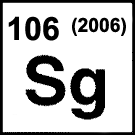Jul 09
20060
adventures in time and space dance Deep Forest Matt Harding space Sweet Lullaby travel Where the Hell is Matt? world
Adventures In Time And Space 2: Where The Hell Is Matt?
Video game designer Matt Harding created a video called Dancing that shows him dancing at various locations around the world. After making his video from footage that he collected from his travels in 2003 and 2004, Matt posted it for his family and friends on his blog in 2005.
Matt then made a second, extended video in 2006 with sponsorship from Stride gum. The video is also called Dancing, which he uploaded to YouTube as Where The Hell Is Matt? His website for his experiences can be found here.
In the 2006 version of Dancing, Matt appears in the following locations (the coordinate system is WGS 84). The list is in chronological order:
- Salar de Uyuni, Plurinational State of Bolivia (-20.133775, -67.489133)
- Petra, Hashemite Kingdom of Jordan (30.32245, 35.451617)
- Machu Picchu, Republic of Peru (-13.163333, -72.545556)
- Venice, Italian Republic (45.4375, 12.335833)
- Tokyo, Japan (35.689506, 139.6917)
- Galapagos Islands, Republic of Ecuador (-0.666667, -90.55)
- Brisbane, Commonwealth of Australia (-27.467917, 153.027778)
- Luang Prabang, Lao People’s Democratic Republic (19.883333, 102.133333)
- Bandar Seri Begawan, Nation of Brunei (4.890278, 114.942222)
- Area 51, Nevada, United States of America (37.235, -115.811111)
- Tikal, Republic of Guatemala (17.222094, -89.623614)
- Half Moon Caye, Belize (17.2, -87.533333)
- Sossusvlei, Republic of Namibia (-24.733333, 15.366667)
- Routeburn Track, New Zealand (-44.726954, 168.170337)
- Monument Valley, Arizona, United States of America (36.983333, -110.1)
- South Shetland Islands, Antarctica (-62, -58)
- Chuuk State, Federated States of Micronesia (7.416667, 151.783333)
- London, England, United Kingdom of Great Britain and Northern Ireland (51.504722, -0.1375)
- Karl G. Jansky Very Large Array, New Mexico, United States of America (34.078749, -107.618283)
- Abu Simbel Temples, Arab Republic of Egypt (22.336944, 31.625556)
- Easter Island, Republic of Chile (-27.116667, -109.366667)
- Gare TGV Haute-Picardie, French Republic (49.859167, 2.831667)
- Ephesus, Republic of Turkey (37.939139, 27.34075)
- New York City, New York, United States of America (40.70569, -73.99639)
- Mutianyu, People’s Republic of China (40.438017, 116.5619)
- Guam, United States of America (13.5, 144.8)
- Mokolodi Nature Reserve, Republic of Botswana (-24.743294, 25.798903)
- Berlin, Federal Republic of Germany (52.503056, 13.444722)
- Sydney, Commonwealth of Australia (-33.8694, 151.2019)
- Dubai, United Arab Emirates (25.117222, 55.198333)
- Rock Islands, Republic of Palau (7.161111, 134.376111)
- Mulindi, Republic of Rwanda (-1.476389, 30.040278)
- Neko Harbor, Antarctica (-64.833333, -62.55)
- Kjeragbolten, Kingdom of Norway (59.033564, 6.569722)
- San Francisco, California, United States of America (37.819722, -122.478611)
- Seattle, Washington, United States of America (47.650955, -122.34728)
Incidentally, the background music is Sweet Lullaby by Deep Forest. The song contains vocal samples from the traditional lullaby Rorogwela sung in the Baegu language. The vocal samples were recorded by ethnomusicologist Hugo Zemp while he was in the Solomon Islands.
Where The Hell Is Matt? Dancing (2005)
Where The Hell Is Matt? Dancing (2006)




